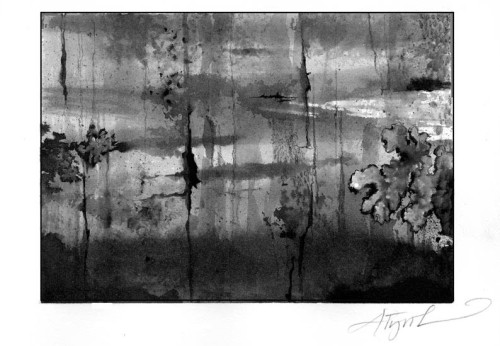
It’s a strange, beautiful scene. I see cliffs and chasms and valleys unlike anything I’ve viewed on earth. It’s as though I’m glimpsing a rugged landscape on a planet somewhere far out in the universe.
I’m looking at a “barkscape,” my own word for a tree’s sheathing considered up close. (“Barkscape” is a word I thought I had coined, only to discover that photographing or painting images of bark is an established field of abstract art.) My ‘barkscapes’ are essentially my own views of a tree’s bark topography.
A few days ago I stood inches from a sugar maple and peered at its craggy trunk and had the odd thought that the tree’s miniscule topography was every bit as intriguing as the Grand Canyon or the Green or White Mountains.
When I look closely at a tree trunk, what do I see? I see the thick outer bark consisting of dead cells filled with cork and air. This outer layer is formed by cells of the cork cambium and the death of inner food-transporting phloem cells. Outer bark is a protective shield for an even deeper layer of cells, the vascular cambium, which is responsible for a tree’s growth in girth. Outer bark protects all sensitive inner layers against harsh sunrays, insect pests, wind-blown dust, environmental contaminants and water loss.
A tree breathes through its outer bark as vital gases are exchanged between atmosphere and the cambium layers. When outer bark is damaged, disease-causing bacteria and fungi can enter the tree’s various layers of tissue, causing rot and possibly death.
Bark is more than just a protective coat. The fissures and irregularities of bark offer a complex microhabitat for countless insects, spiders, bacteria, fungi, algae, mosses and liverworts. Lichens are especially common on tree bark where rough surfaces provide opportunities for long-term attachment. Various bird species and small mammals, such as squirrels, manage to tear bark off the tree or collect bits of it from the ground to strengthen their nests. Many insects find shelter within or under bark’s protective coat.
Barkscapes vary greatly from one tree to the next, but even within a single species the texture of bark varies. A young tree’s bark is thin and smooth, but as the plant grows in girth, the protective coat becomes too tight and splits, forming cracks and ridges that have different patterns in every tree of that species. Each tree species can be identified by the overall pattern of its bark, and the thickness and texture of a single piece of bark can suggest a tree’s degree of maturity.
It’s this rough, unpredictably sculpted surface and what it means to other lives that intrigues me. With my nose almost touching a barkscape, I use a wide-angle magnifier to view an astonishing scene.
On a convoluted surface of a particular tree, I find clusters of moss, so small they first seem like nothing more than dark green fuzz. Yet on further inspection, using greater magnification, I notice they are perfectly formed with the tiniest spore-bearing stalks I have ever seen. Beside them are palm-shaped lichens, exceedingly minute versions of much larger lichens growing on a nearby rock wall. A green tendril of a leafy liverwort extends from a deep fissure in the bark.
I spot a dozen more tiny plants scattered over an area the size of a postage stamp, a miniature scene oddly reminiscent of western mountain passes where hardy plants, thousands of times larger, survive the elements.
Here on this tree, instead of bighorn sheep and mountain goats, are mites the size of pinheads, springtails and a hurrying ant or two. If I wait, a beetle may pass by, and I’ll probably find a moth resting the day away in a deep crack.
With the naked eye, I note other larger creatures in the barkscape —spiders, harvestmen and centipedes. Pry off a loose strip of bark, and carpenter ants, termites, millipedes and beetles may be exposed, the latter responsible for the wandering “engravings” etched between bark and underlying wood.
Be forewarned: Stand close to a tree, nose to bark, and your sanity is likely to be questioned by any passersby.
But who cares? You are witness to a miniature world about which they know little. Each barkscape is unique, so enjoy your visit to this fascinating world.


Discussion *